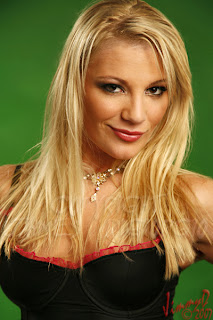 I'm no physicist, far from it. But in my line of work, the thing I count on the most is something I know very little about, leastwise, in terms of what it is and how it makes things visible and affords illumination.
I'm no physicist, far from it. But in my line of work, the thing I count on the most is something I know very little about, leastwise, in terms of what it is and how it makes things visible and affords illumination. I'm talking about light: That magical, luminous, radiant, energy composed of gazillions and gazillions of photons that go shooting through time and space, seemingly self-propelled at 186,282 mi./sec. in some mysterious way I cannot fathom. But my lack of understanding of this physical phenomenon doesn't prevent me from using it, modifying it, bending it, bouncing it, and, (dare I say?) controlling it for my own, photographic purposes.
One way I'm able to make photographic trickery using this thing that I don't understand is by envisioning it as something other than what it is, i.e., to consider it in terms that I'm able to grasp in a decidedly non-scientific way.
I imagine the photons that make up light as if they are fiery ping pong balls. For example, when I'm employing artificial light sources, I envision the light coming from each source as if they were intense, expanding, fiery, ping pong balls, hurdling out from each source as the strobe fires, growing exponentially larger (yet with less power to illuminate) as it moves further away from that source. And like playing ping pong, I know I can bounce those fireballs off of things, not necessarily off of each other, but off of reflective materials that I set in their paths. I also know that, like in a game of ping pong, those fiery, ping pong balls will bounce predictably.
BTW, if you're thinking I've lost it or I'm currently under the influence of some drug, mind-altering substance, or whatever, you'd be wrong... at least this time you would be. This is simply how I see the light. And it helps me to see it this way so that I'm better able to utilize it in my photography.
 I was on a set recently and one of the (video's) lighting guys was watching me set up for some shots. He said, "Wow. You're really old school, dude." I asked what he meant, other than I'm old, and he explained that he doesn't often see photographers make much use of reflectors and/or bounce-boards when they're setting up strobes.
I was on a set recently and one of the (video's) lighting guys was watching me set up for some shots. He said, "Wow. You're really old school, dude." I asked what he meant, other than I'm old, and he explained that he doesn't often see photographers make much use of reflectors and/or bounce-boards when they're setting up strobes. "And that's old school?" I asked, a bit skeptically.
"Yep." he said.
"What do they use?" I asked as I set up a big piece of white foamcore, opposite my main light, for some fill.
"Mostly just their lights," he said. "You know, with softboxes and umbrellas and those sorts of things. I don't see them bouncing much light. They mostly use more lights and modify them."
"Hmm..." I thought. "More lights means more unloading and unpacking and setting up and then breaking down and re-packing and re-loading."
Yeah. I'm lazy.
But it reinforced what I already knew: "Why use more lights when less will do?"
Now don't get me wrong. There are times when you need more lights. But then, there are times when you don't. (Please note: When I'm referring to "less will do," I'm talking about lights, as in electrically-powered, artificial, light sources, and not light, as in that magical, radiant, energy.)
I think I'm getting to a point here. I'm just not sure when I'll get there.
Old school or not, it seems to me that too many shooters count on too many lights to do the work that less lights will accomplish. And it can be accomplished by recycling the light already produced and already used in the exposure. (Helped out, of course, by the fact that it's traveling at 186,282 mi./sec. which is virtually instantaneous for photographic purposes.) In other words, by bouncing some of that light back at the target, after it's already made a pass across it, you reduce the number of sources needed. And you accomplish this with reflective materials, like foamcore and other stuff, appropriately placed so that the fiery ping pong balls bounce predictably where you want them to go. What's really cool about recycling (bouncing) light is that it often tends to appear more subtle as it reflects back on the target and then reflects back to your sensor or film emulsion.
The pretty girl in the pics is Aurora. I shot these of Aurora last week. MUA was Vera. The image below shows the lighting setup. Rather than set a light source for fill, as many shooters do, I used reflectors to bounce back some of the light that's already performing other chores in the images. Personally, I like the look of reflected fill light better than using an instrument to provide it. But maybe that's just me?


4 comments:
Excellent article. Thank you.
I think this is one of the best posts you've done man! http://www.studiolighting.net/the-power-of-low-power-strobes/ I think if you read that you may feel that we think a bit alike
Cool post. Ping Pong balls is about right, just very tiny ones :)
Hey Jimmy, what struck me as funny while I read this post is, not only are you being smart about how you maximize the use of light by reflecting it, but your also lessening your personal "photographer's carbon footprint".
Your not only crafty, your PC as well!
Post a Comment